What does eco-friendly garden encompass? How to make your garden more sustainable? In addition to trying out the usual 7 green actions, this time I decided to compile a comprehensive list of ideas by various authors on how to create an eco-friendly garden. The food for thought checklist ended up becoming a directory of 30 entries! What did I forget? If you find a tip that I missed, please share it in a comment so we can continue to gather great ideas about eco-friendly gardens!
The advice that we implemented in our garden during the last weeks is more elaborated in the list below. I also decided to accompany by photos the 7 sustainable actions we chose to go for.
I started by Google ranking. First came a post by horticulturalist Matt James outlining the following recommendations:
1. Recycle and reuse materials
This very important point can be implemented in every garden, whatever the size and location. A balcony garden could be a great start. For instance, instead of buying new flowerpots, covers, and saucers in a gardening shop as I usually would, I used all damaged plates I found at home. I also used wine boxes to raise some pots higher, and I found many used supplies (pictured below) on a local www.leboncoin.fr website:
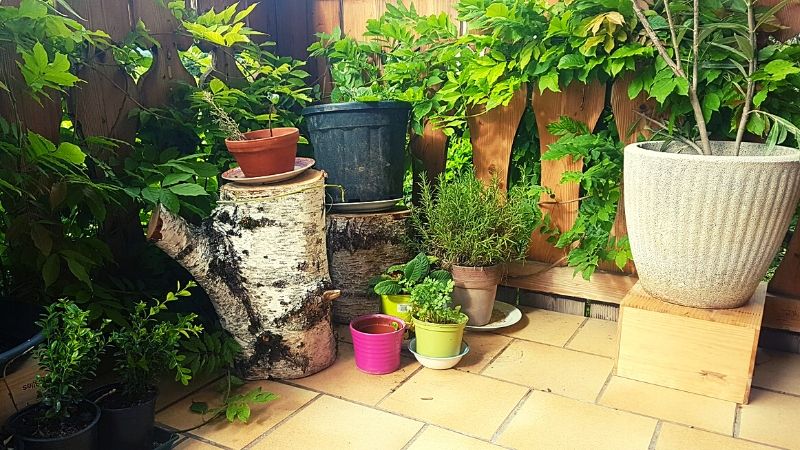
Similarly, to grow seedlings this year, I used the flowerpots that I had received when buying plants from gardening shops. Egg cartons are also a creative solution (presented on one featured photo).
Through these experiments, I gained courage and dared to try some more ambitious projects. The previous owner had many dogs and cats and needed to protect the veggies garden from them. Our dog Fleur is not so into our kitchen garden, and the very old and not so aesthetic fence had spoiled my view for a while. Instead of bringing it to rubbish collection, however, I decided to reuse it as part of our property fence behind a thick hedge. Last year the original fence was destroyed as we cut the high Leylandii hedge. To our surprise, the recycled fence matched the broken part perfectly, confirming that the idea was not so bad!
2. Use eco-materials
For instance, cement is not the best option as it has a high carbon footprint. Instead, Matt James writes: “Materials such as cob (clay and straw), oak, rammed earth, log walls, woven willow, chestnut paling timber and even straw bales are full of character.”
3. Choose local materials
In order to reduce your garden’s carbon footprint, choose locally made or sourced materials (e.g. local timber) – a great eco-friendly garden idea!
4. Conserve water by setting up a rainwater collection system
That was another suggestion we picked up. We had already a rudimentary rain barrel, as presented in my blog post on saving water, but it was not very big. Moreover, it recently got damaged and barely contained any rainwater. Inspired by other acts of reusing and choosing local materials, I once again searched a local website and found used wine barrels. Now, I can conserve about 220 l water in each barrel—and they add lots of charm to my eco-friendly garden!
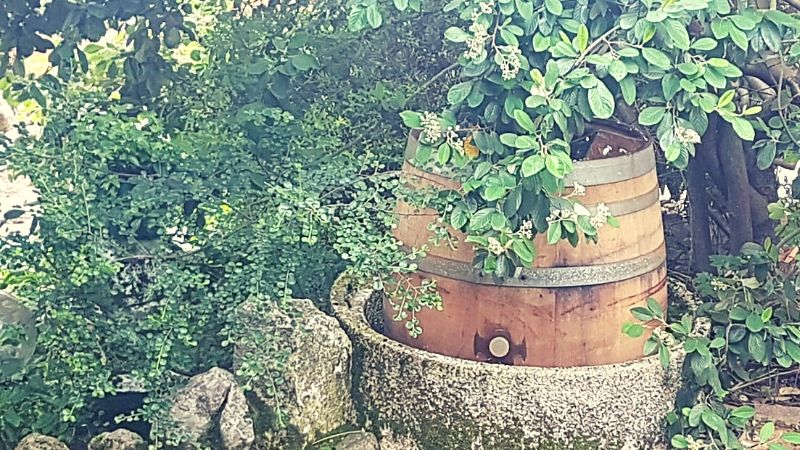
5. Go for permeable paving
Rainwater runoff often causes local flooding that harms wildlife. Again, Matt James offers great alternatives: “Crunchy gravel and slate chippings are the obvious permeable alternative to solid paving, but there are lots of other materials available – from porous asphalt and block paving to grass reinforced with recycled plastic grids.”
6. Cut back on chemicals
This includes pesticides, chemical fertilisers, and herbicides. Instead, try out natural solutions that are also outlined below.
7. Have an eco-roof
I have always loved the photos of Iceland houses covered with grass roofs! When I learned that green roofs also “increase biodiversity, provide good insulation, improve air quality and control water run-off,” my wish to try that became even stronger.
To start humbly, I have been thinking of starting with a green roof on my garden chalet. After reading about types of green roofs on livingroofs.org, I decided to try out sedum mats. Lucas Heitz explains how to make green roofs, and I’m planning to seed sedum next spring. You can really start small, as showed on one photo by Lucas Heitz:
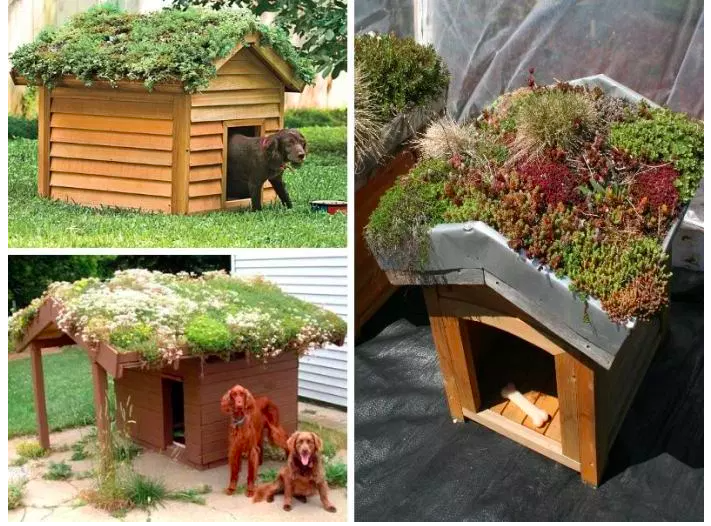
8. Use eco-friendly plants
This, for instance, would include native plants that produce berries, wildflowers, plants that are more pest- and drought-proof.
9. Conserve biodiversity
In one of my previous posts I discuss various ideas of preserving wildlife in a eco-friendly garden.
10. Produce your own compost
This was something that I had already put in place when I explored how I could recycle better.
11. Take care of your soil
Spread compost regularly around your garden. This helps to diminish light soil erosion and results in healthier plants that are more pest- and disease-proof.
12. Reduce peat-base composts
Peat digging is damaging for natural habitats, so the less peat is used, the better for the environment.
13. Respect and follow your garden
Matt James writes well: “Work with the characteristics of your garden, not against them.” It is tempting to design the garden based on one’s dreams, but a more eco-friendly solution is to honour as much as possible your garden and plant according to what is there already and what traditionally grows well in the region.
Another source that appeared among the top Google-ranked posts was from James Martin for Woodland Trust. I found these great suggestions from there:
14. Plant a tree
If you have space, go for planting a tree that makes your yard more attractive from a biodiversity perspective.
15. Have wild spaces in your eco-friendly garden
Spare some spaces for wildlife. For instance, do not mow all corners or trim all bushes.
16. Provide homes for wildlife
These could be nest boxes, hedgehog homes, or bug hotels.
17. Grow your own food
This is something that I do increasingly nowadays. I discuss it in my post on growing our own food.
18. Use fallen leaves as a home for wildlife
I put them under my hedge, for instance, and later they become great fertilisers.
19. Produce your own fertiliser or buy only organic ones
I’ve decided to buy only organic fertilisers, and the French garden shop Botanic has a great variety of options:
Gemma Perkins, in her post for Earth 911, also provides many useful tips. I found those to complete my list:
20. Set up bird feeders
In addition to nest boxes, install some bird feeders. Birds are also great for pest control.
21. Practice companion planting
Some plants help others by deterring unwanted insects. For instance, it is suggested to plant spring onions with carrots, roses with garlic, and cucumber with radish.
I discovered recently that my new peach tree is suffering from leaf curl, and I decided to try out planting nasturtium
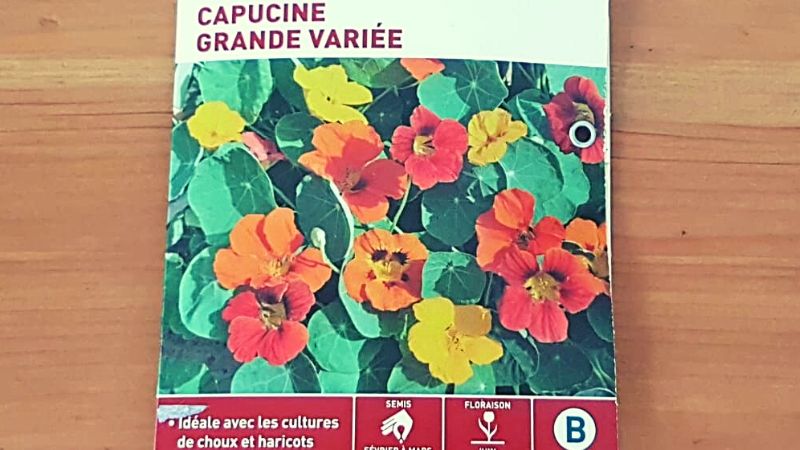
below the tree—a natural treatment suggested by Elsa Sidawy.
In addition, some eco-friendly garden ideas can be found in post by Green Roofers that, for instance, recommends to:
22. Use grey water
Plants can be watered with grey water collected from kitchen sink or shower.
23. Water your plants at right time
To reduce evaporation, water your plants in the evening, not during the day.
24. Water your plants in a right way
Sprinklers and traditional hoses are not the best option, as they use a lot of water. Explore adapted irrigation systems.
Looking for eco-friendly garden ideas, I turned to a post from Outdoorliving Today that outlines, among others:
25. Use solar lights
For lightening your garden, go for solar options.
26. Eco-friendly garden furniture ideas
Wooden furniture that has not been treated by chemicals is one of the great options to explore.
27. Natural swimming pools
Outdoorlivingtoday.com writes:
“These pools avoid the use of chlorine and other chemicals and also do not need to be drained. You only need to top up water that evaporates, reducing your water bill as well.
You can opt for a hybrid swimming pool that uses some mechanical components and plants instead of chemicals if you do not have sufficient space for a completely natural swimming pool.”
From a Reader’s Digest post on eco-friendly gardening ideas, I found these recommendations.
28. Use natural pesticides
That was another tip that I decided to use. As mentioned above, my peach tree suffered leaf curl, and I decided to use suspended eggshells (inside a little bag, attached to the trunk of the tree as shown in the photo below) and garlic spray to treat the disease.
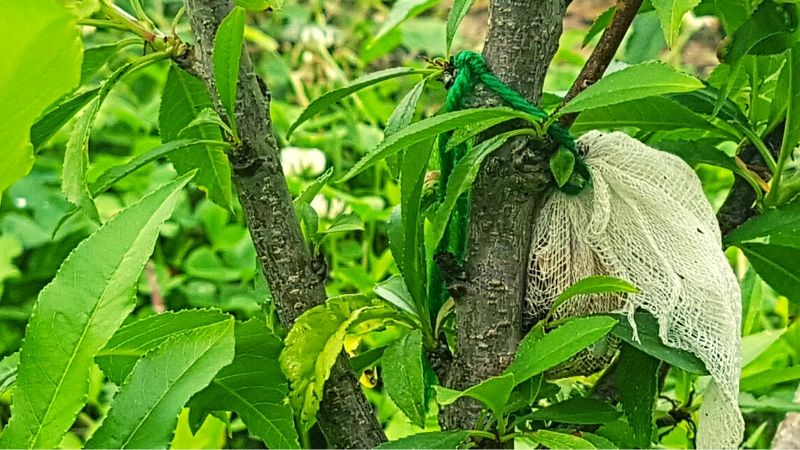
The final source that I draw on was written by Brian Barth, and among his suggestions, I decided to try these two.
29. Make a pond
This is a great way to conserve wildlife and attract, for instance, frogs to your sustainable garden.
30. Make swales or terraces on slopes to reduce erosion
These are useful for run-off water to soak into the soil.
These are the suggestions I’ve compiled so far, but I am sure that more great ideas exist. What would you add to this list?

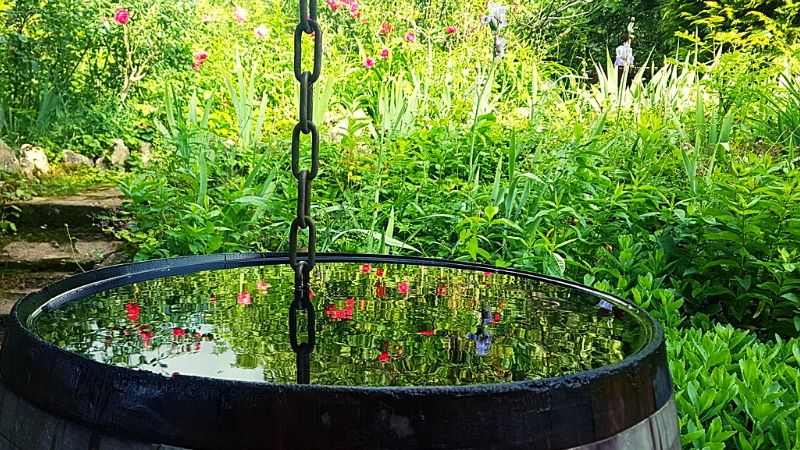
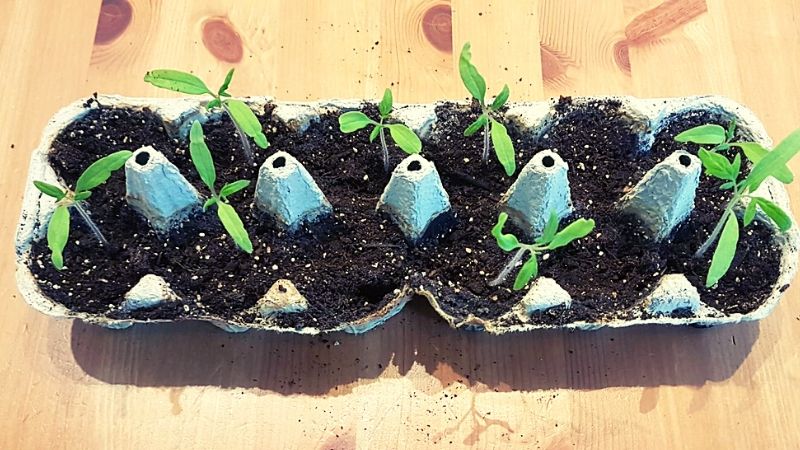
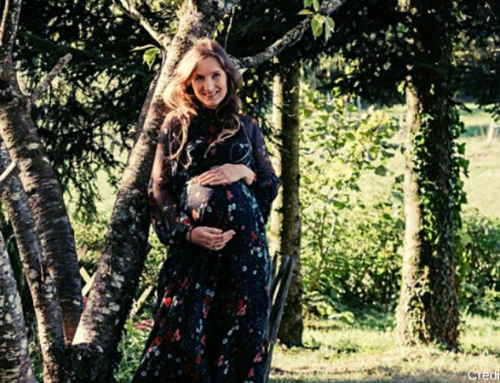
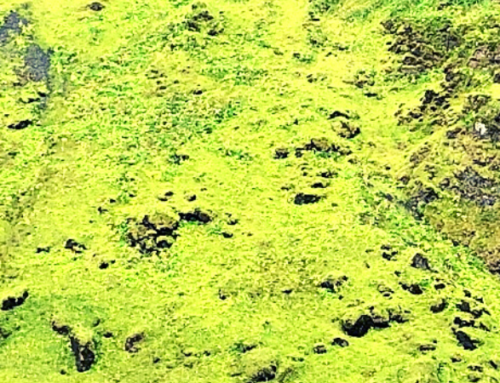
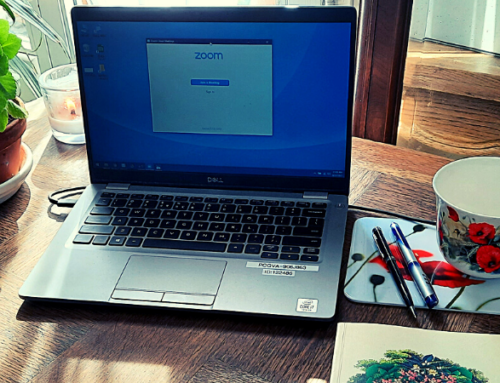

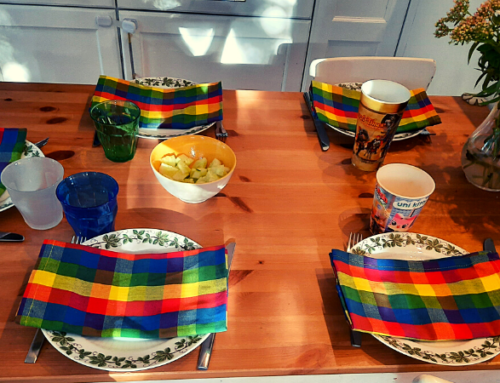

Hello, a little message after this long, very long absence… Nice your gardening tips…
Thank you Corinne for your message! I am glad you liked the gardening post.